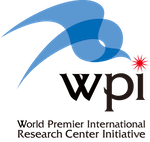Sayaka Kindaichi (Hiroshima U)

The contents of this presentation are as follows. Firstly, the energy supply and energy consumption in buildings are described. The energy consumption in the building sector accounts for approx. 1/3 of the total one. As the power supply from renewable energy sources, which varies according to weather conditions, has increased, buildings are required to equip energy storage functions. Additionally, it is known that a large amount of CO2 is generated during power generation and through energy use in terms of CO2 emission. Therefore, we have focused on engineering approaches to increase energy efficiency and effective use of renewable energy in buildings through the application of heat pumps and thermal energy storage (TES). In addition, adaptation to the local environment is an important element for buildings. Most regions in Japan have relatively moderate climates and require both cooling and heating. Air source heat pump systems, such as room air conditioners, are the most common and reasonable air conditioning devices both for cooling and heating in both residential and commercial buildings. Such air conditioners generally consist of outdoor and indoor units. Room spaces are cooled or warmed by transferring heat of refrigerant directly in the indoor unit to the air circulated in the room. Although the refrigerant flow system is convenient and has been wide spread, it is less flexible in terms of system design than chilled or warmed water circulation system which is common in cold climate regions. We have therefore investigated new heat pump and TES systems affordable to moderate regions. First, ground source instead of general air source allow to improve the energy efficiency of heat pumps. Several ground source systems have been installed and demonstrated actual energy performance in the HU campus. Reservoir water, a kind of local resources, has a large potential to further increases in energy efficiencies in summer. Secondary, we are developing a TES system called “Posi-watt TES” that can be easily combined with refrigerant flow system to adjust the renewable power supply and air conditioning loads in the building side. At the same time, we are developing an air conditioning system with radiant panels in addition to indoor units in the refrigerant flow system. This system improves the quality of indoor thermal environment in moderate climate regions where room spaces are conventionally cooled or warmed only by air flow.


